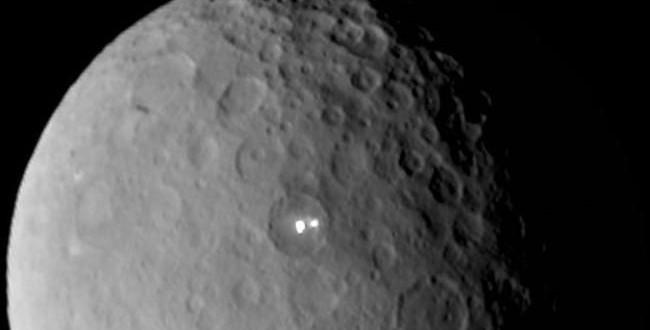About a year ago when news of the bright spots on Ceres broke, scientists were puzzled by the mysterious marks.
The situation has just become even more perplexing, as a recently published study reveals that observations show the glowing features change intensity over time.
“The result was a surprise,” Antonino Lanza, a co-author on the new research, said in a statement.
The team found that when the spots are facing the sun, they produce plumes of material that reflect more light. The plumes eventually evaporate, and the spots appear less bright. The process repeats from night to night, but the changes in brightness don’t seem to happen in any particular pattern or on a predictable timeline.
“We did find the expected changes to the spectrum from the rotation of Ceres, but with considerable other variations from night to night,” Lanza said.
What do the changes in brightness mean? Possibly that something is happening below the surface to churn up the bright material where it leaks out through the bright spots we see and then evaporates.
In other words, Ceres has some kind of active process happening in its core.
Scientists will need more data before they can draw any conclusions, though.
It seems Ceres hasn’t run out of mysteries yet.
A large, ancient #Ceres crater, smoothed & rounded by impacts & debris from other craters. https://t.co/DAIMBFelWH pic.twitter.com/TrokbljRKV
— NASA's Dawn Mission (@NASA_Dawn) March 16, 2016
Agencies/Canadajournal
 Canada Journal – News of the World Articles and videos to bring you the biggest Canadian news stories from across the country every day
Canada Journal – News of the World Articles and videos to bring you the biggest Canadian news stories from across the country every day



